I landed in Bremen, Germany, with a sense of curiosity, ready to see what makes this city so enchanting. Walking these historic streets really does feel like stepping into a real-life fairytale, with centuries-old buildings all around and the famous Bremen Town Musicians statue waiting for a photo op.
Every corner here seems to have a story to tell, whether it’s the colorful lanes of Schnoorviertel or the impressive market square. The city’s old-world charm and the lively energy along the Weser River mix in a way I didn’t quite expect.
My walk along the Weser River pulled me right into Bremen’s daily rhythm. Boats drifted past, and café terraces buzzed with laughter and chatter.
Exploring on foot, I got to see how Bremen balances its medieval roots with a modern, creative vibe. It’s a city that feels both historic and refreshingly vibrant.
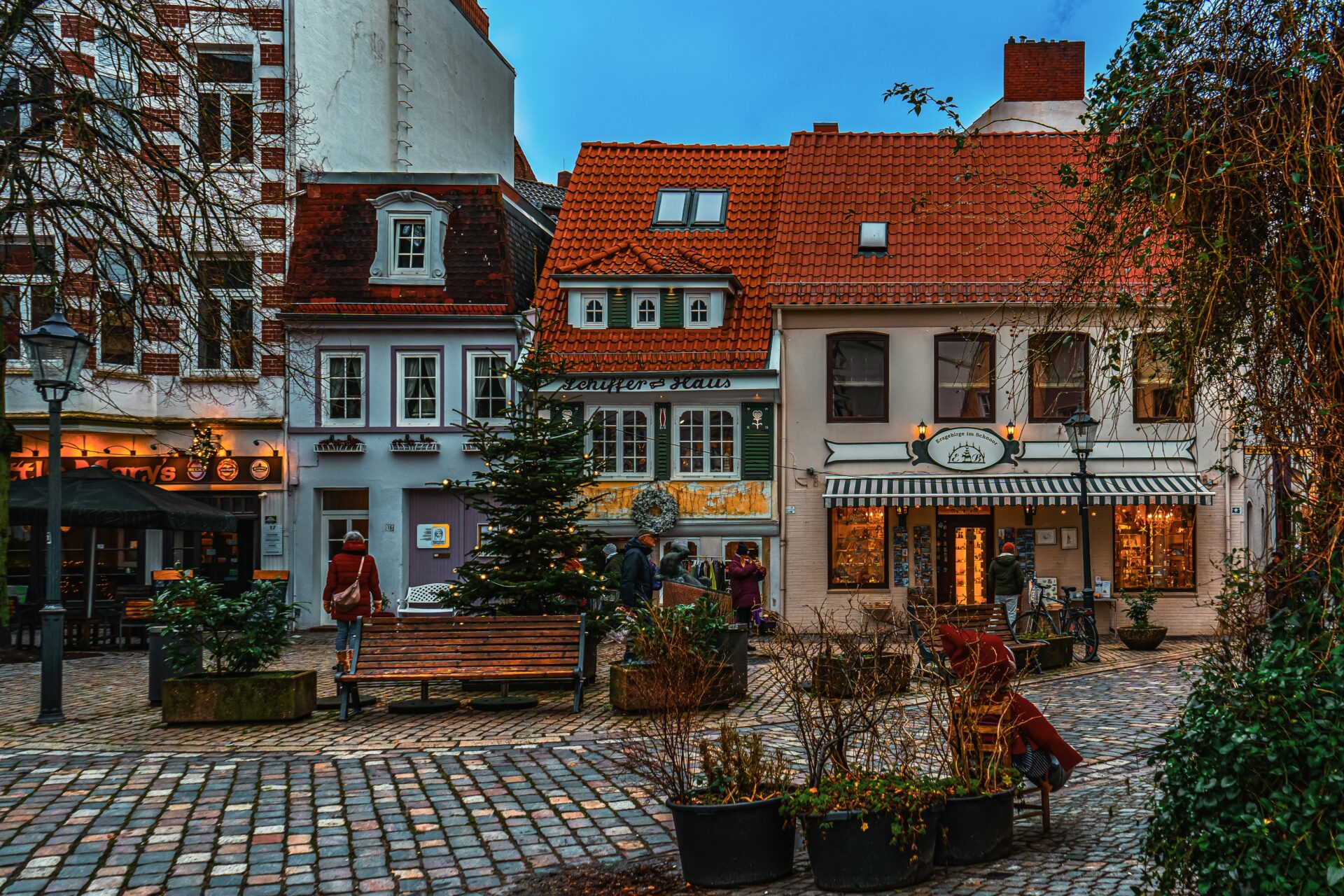
Majestic Bremen: From Hanseatic Roots to UNESCO Heritage
Bremen brings together medieval architecture, trading history, UNESCO sites, and river views. Its Hanseatic legacy attracts travelers like me to stroll its storied lanes and admire its iconic sights.
The Hanseatic City And Its Medieval Origins
Right away, I noticed how Bremen’s identity is tied to its Hanseatic League past. This powerful network of merchant cities ruled northern Europe’s trade from the 13th to 17th centuries.
Bremen joined the League thanks to its crucial port on the Weser River. Medieval buildings cluster around the market square and show off the city’s rich past.
Brick Gothic and Weser Renaissance styles sit side by side. Trade in wool, grain, and beer fueled the city’s growth and left clear marks on its streets.
Merchant families shaped Bremen’s character. Old guildhouses and narrow lanes make me feel like I’m wandering through history, not just visiting a city.
The sense of civic pride here is still strong, echoing centuries of prosperity.
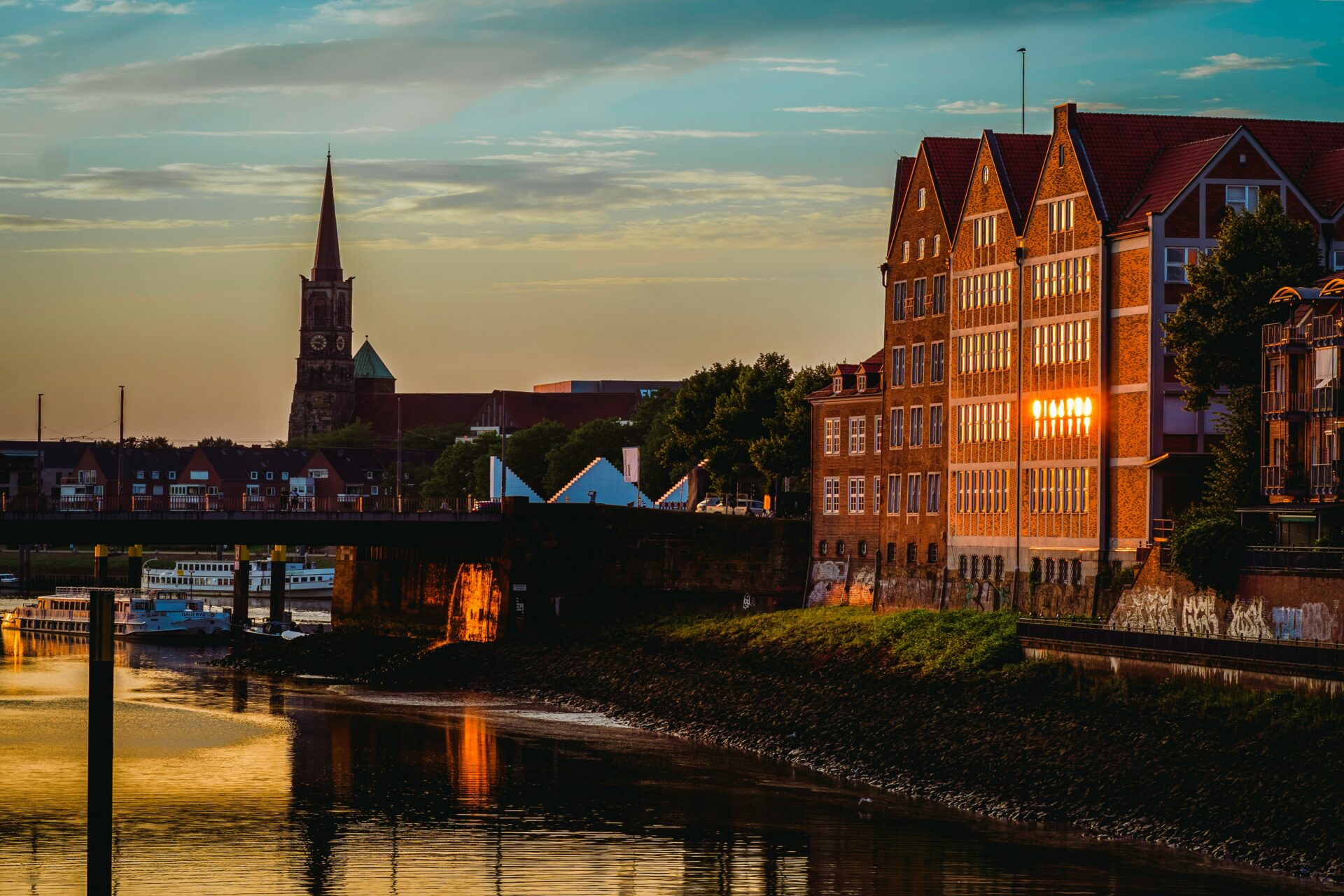
UNESCO World Heritage Landmarks
Bremen’s Town Hall (Rathaus) and the Roland Statue both earned spots as UNESCO World Heritage Sites. The Town Hall stands out with its Weser Renaissance façade, finished in the early 1600s.
Inside, high-arched halls once hosted city councils and grand feasts. Now, anyone can walk those corridors and admire the stained glass and woodwork.
Just outside, the Roland Statue rises over the central market square:
| Landmark | Date Added to UNESCO | Style | Historical Role |
|---|---|---|---|
| Bremen Town Hall | 2004 | Weser Renaissance/Brick Gothic | Civic administration |
| Roland Statue | 2004 | Gothic | Symbol of freedoms |
These landmarks aren’t just beautiful—they represent independence, free trade, and Bremen’s commitment to self-rule.

Historical Significance Of The Roland Statue
The Roland Statue grabs my attention right away. Erected in 1404, it’s the largest free-standing medieval statue in Germany, reaching over 10 meters tall.
Roland, carved from limestone, stands in armor with a sword, guarding the city’s rights. Locals say he represents freedom and market rights, a message Bremen’s citizens wanted to send loud and clear.
This spirit of autonomy helped Bremen stand out from other cities. Even now, the Roland Statue serves as a gathering spot, linking past and present and reminding everyone that Bremen’s quest for independence still shapes its identity.
Wandering Through Bremen’s Fairytale Old Town
Cobbled alleys wind between ancient buildings, leading me to quiet nooks and lively squares. Each street seems to whisper tales of merchant wealth and artisan craft, revealing Bremen’s layers of history and architectural beauty.
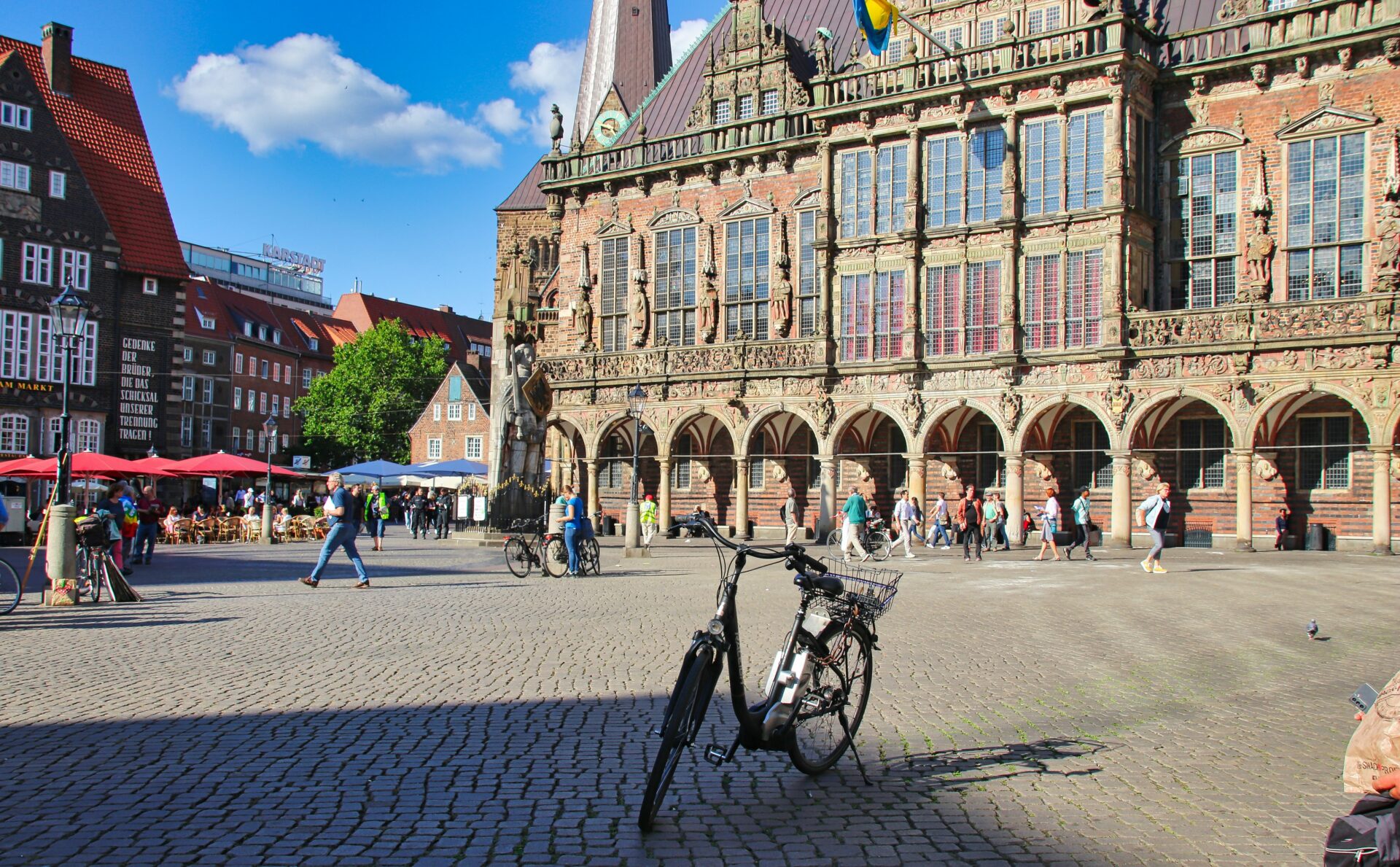
Exploring The Schnoor Quarter
I kicked off my wanderings in the Schnoor Quarter—Bremen’s oldest district. This medieval neighborhood is a maze of narrow alleyways and half-timbered houses, some dating back to the 15th and 16th centuries.
Each house is painted in soft pastels, with carved doors and flower boxes at every window. Schnoor’s past as a hub for craftsmen and fishermen is easy to spot.
Tiny workshops sell handmade jewelry, pottery, and paper goods. The cobblestone streets are lined with cozy cafés and bakeries, and the smell of fresh bread floats through the air.
I lost myself in these winding lanes. Unlike busy city centers, Schnoor feels hidden and peaceful—a pocket of medieval charm in the heart of Bremen’s Altstadt.
Each turn brought a new surprise: a quiet courtyard, an art studio, or even a tiny museum about the area’s past.

Timeless Beauty Of Böttcherstraße
Just a short walk from Schnoor, Böttcherstraße offers a different kind of magic. This street stands out with its mix of art deco and expressionist styles blended into Bremen’s classic brickwork.
Built in the early 20th century, Böttcherstraße is famous for its red-brick facades and quirky sculptures. Shops, galleries, and museums line the street.
The Glockenspiel—a bell tower—plays several times a day, echoing between the buildings. I ducked into the Paula Modersohn-Becker Museum, dedicated to the expressionist painter, and admired the bold shapes and lines in the street’s design.
Böttcherstraße is only about 100 meters long, but every step reveals something new: golden mosaics, ironwork, and detailed brick patterns. Walking here feels like wandering through an outdoor art exhibit.
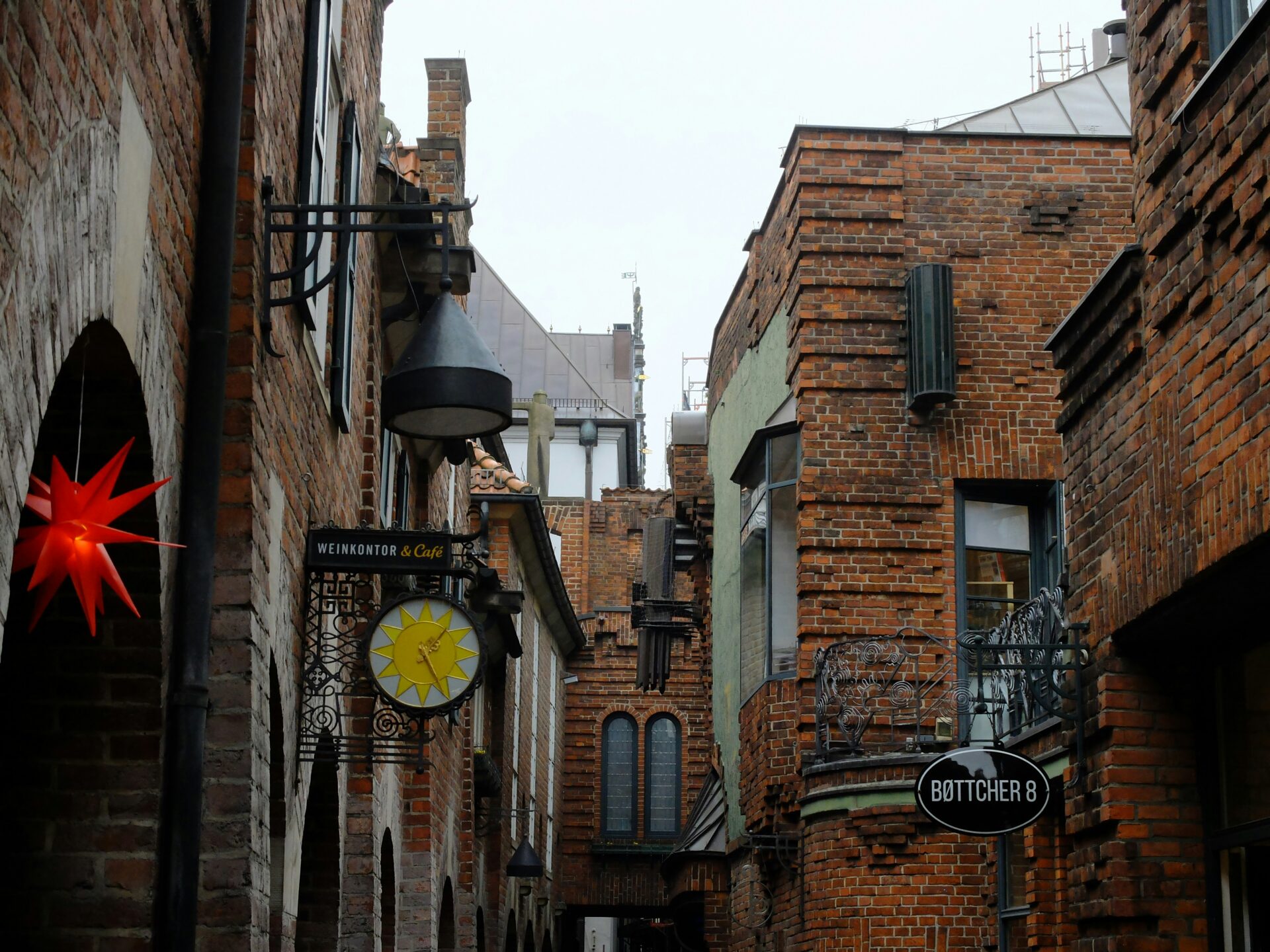
Brick Gothic And Weser Renaissance Marvels
The architectural contrasts in Bremen’s old town really struck me. The grand Town Hall stands as a prime example of the Weser Renaissance, with ornate gables and carved stonework.
Right next to it, the Cathedral’s spires and pointed arches show off the sturdy beauty of Brick Gothic design. I took my time wandering the Marktplatz, spotting details from both styles on different facades.
The Roland Statue in front of the Town Hall is another highlight, a symbol of Bremen’s independence as a Hanseatic city.
These historic buildings aren’t just monuments—they’re still alive with cafés, city offices, and community events.

Hidden Gems And Picturesque Lanes
Past the well-known streets, I wandered into quieter lanes to see another side of Bremen. Behind the main squares, narrow alleys offered peaceful escapes and unexpected discoveries.
I found small gardens and old courtyards, many blanketed in climbing roses and ivy. Hand-painted signs pointed me to hidden guesthouses and art galleries.
One of my favorite finds was a tucked-away bakery selling traditional almond cookies—something only locals seemed to know about.
These hidden gems made my walks feel personal, like the city was sharing its secrets just with me.
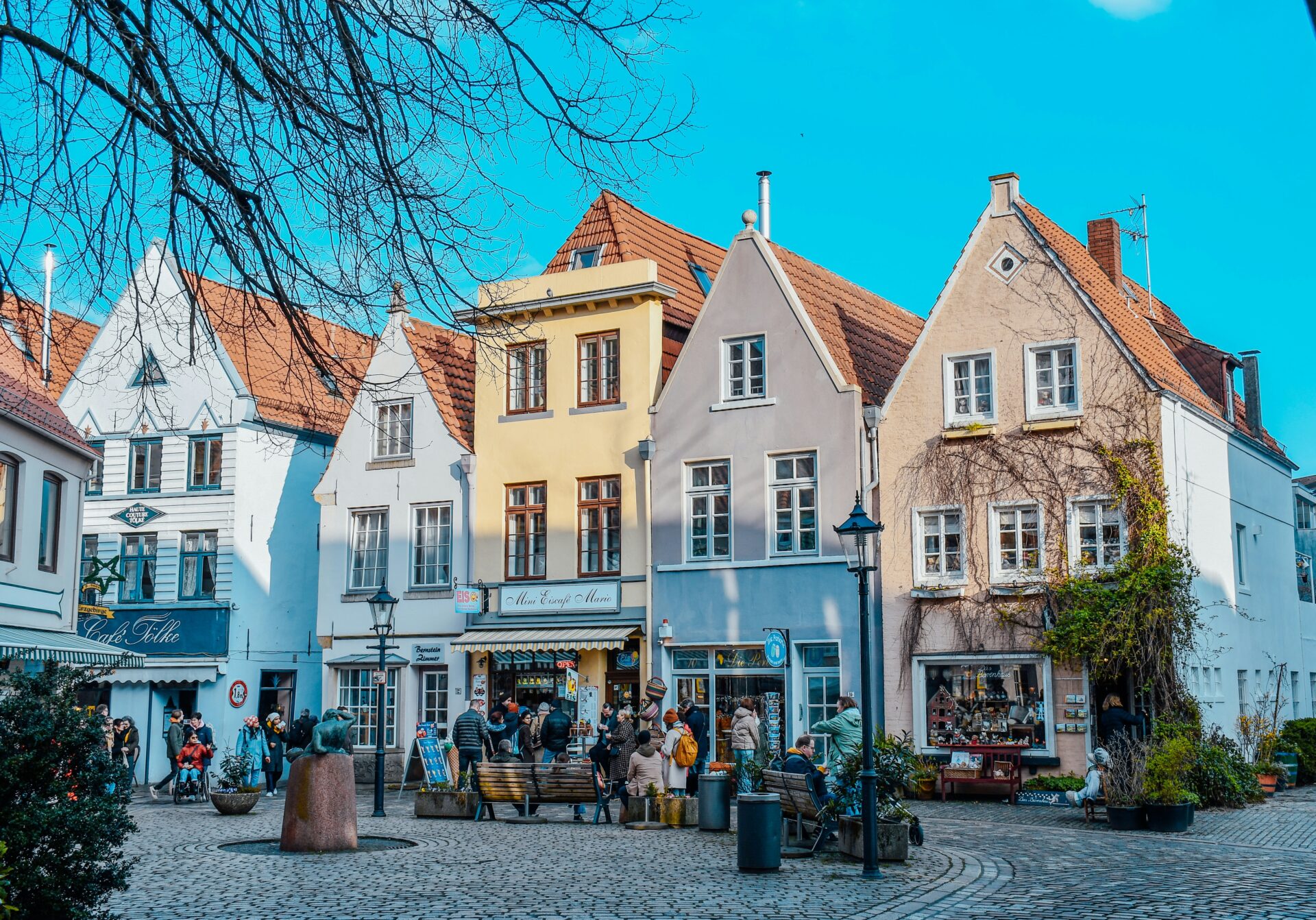
Market Squares And Living Legends
Bremen’s heart beats in its medieval squares, folk tales, and historic landmarks. The city’s busy market square, famous statues, and ties to the Brothers Grimm pull me in.
Marktplatz: Bremen’s Vibrant Heart
Marktplatz is the main square and the true center of life in Bremen. Covering about 3,484 square meters, it’s surrounded by striking buildings, including the UNESCO-listed Town Hall and Roland statue.
The area is known for its Weser Renaissance architecture and lively vibe. I saw markets, seasonal festivals, and social events fill the square throughout the year.
The Christmas Market and events like the “Kleiner Freimarkt” make this spot even more festive.
Cobblestones, old merchant houses, and historic sites line the square, making every visit feel like a step back in time.
Locals and visitors gather here to relax, meet friends, or watch street performers. Marktplatz isn’t just for photos—it’s the living center of Bremen’s past and present.
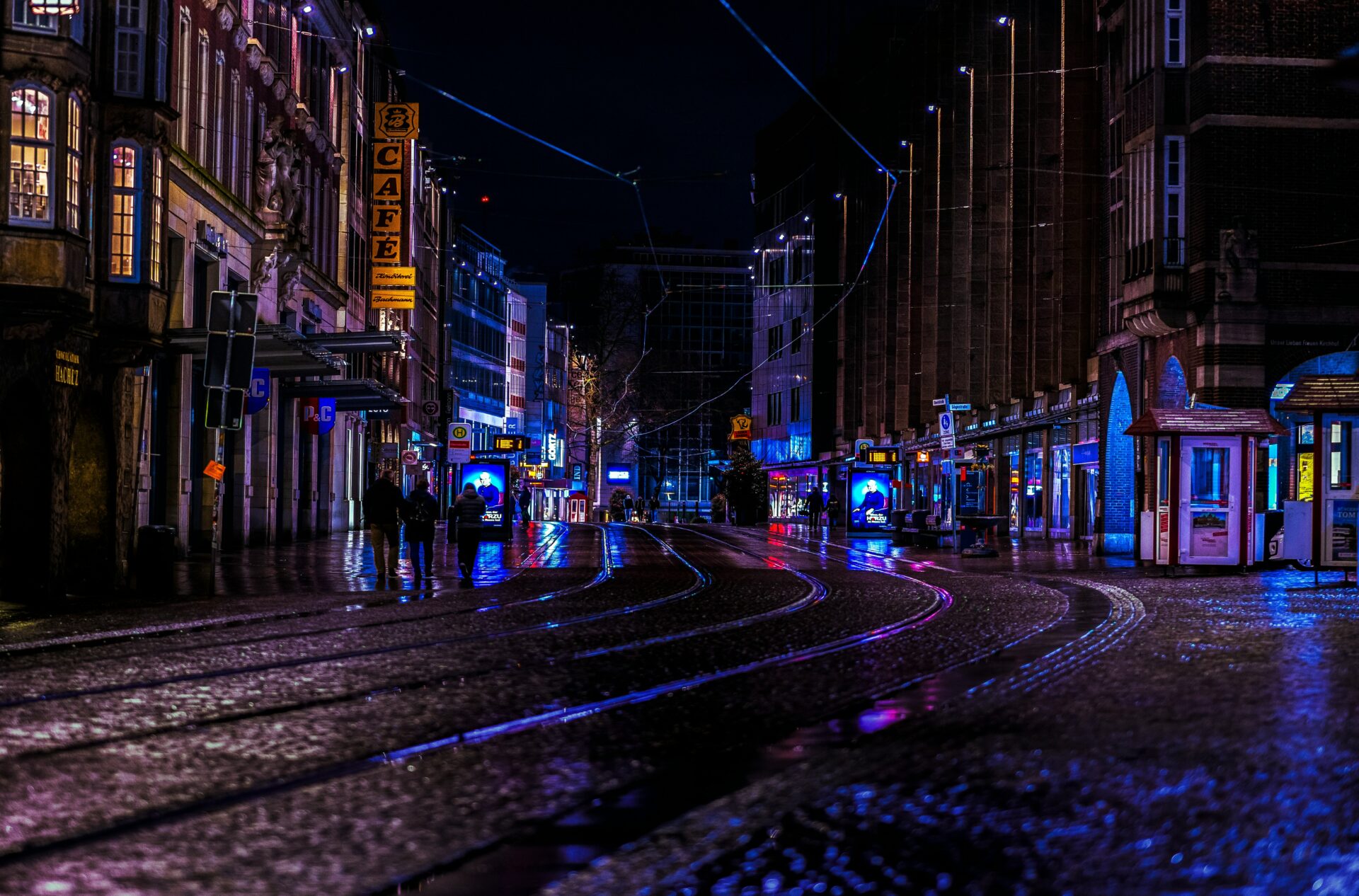
Bremen Town Musicians Bronze Statue
Near the square, I spotted the famous Bremen Town Musicians bronze statue. The donkey, dog, cat, and rooster stand stacked on top of each other, straight out of the Brothers Grimm fairy tale.
The statue is smaller than I expected, but it’s always surrounded by people. Locals say that touching the donkey’s legs brings good luck, so I joined in.
Created by sculptor Gerhard Marcks in 1953, the statue stands as a reminder of hope, teamwork, and the power of stories. It’s become a symbol of Bremen and is impossible to miss in the city center.
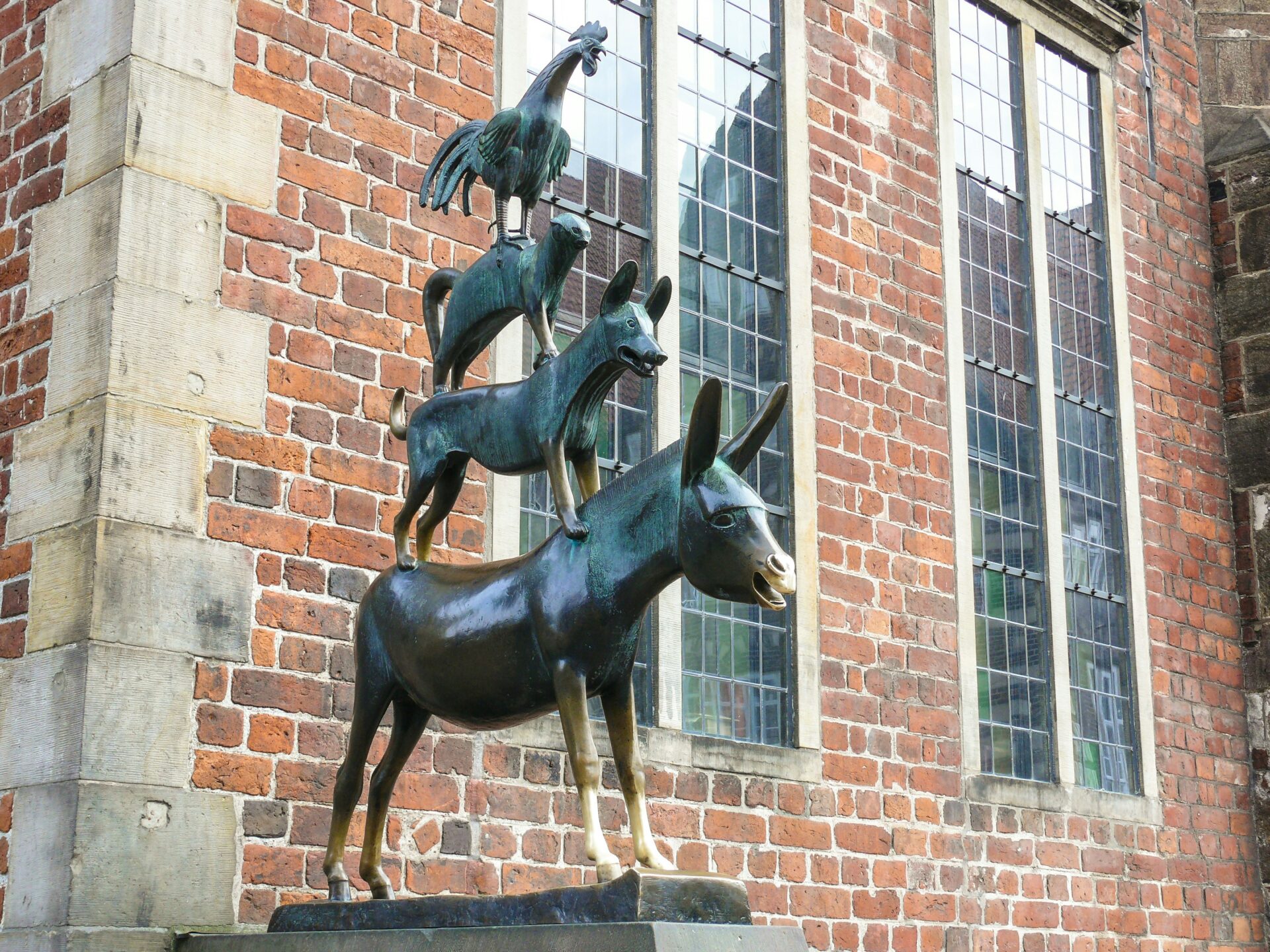
Storytelling And Folklore From The Brothers Grimm
Bremen is steeped in German folklore, especially the Brothers Grimm’s tales. Their story, “The Town Musicians of Bremen,” pops up everywhere—in statues, murals, and festivals.
Guided tours and local storytellers share the tale in many languages. Sometimes, street festivals put on plays with actors dressed as the four animals.
Bremen really embraces its fairy-tale legacy, making history feel alive for all ages.
Key elements from Brothers Grimm folklore:
- Animals as main characters
- Strong themes of friendship and freedom
- Hope for a better life through courage and unity
These stories add a bit of magic to Bremen’s medieval streets. They invite me to see the city through the eyes of legend and wonder.
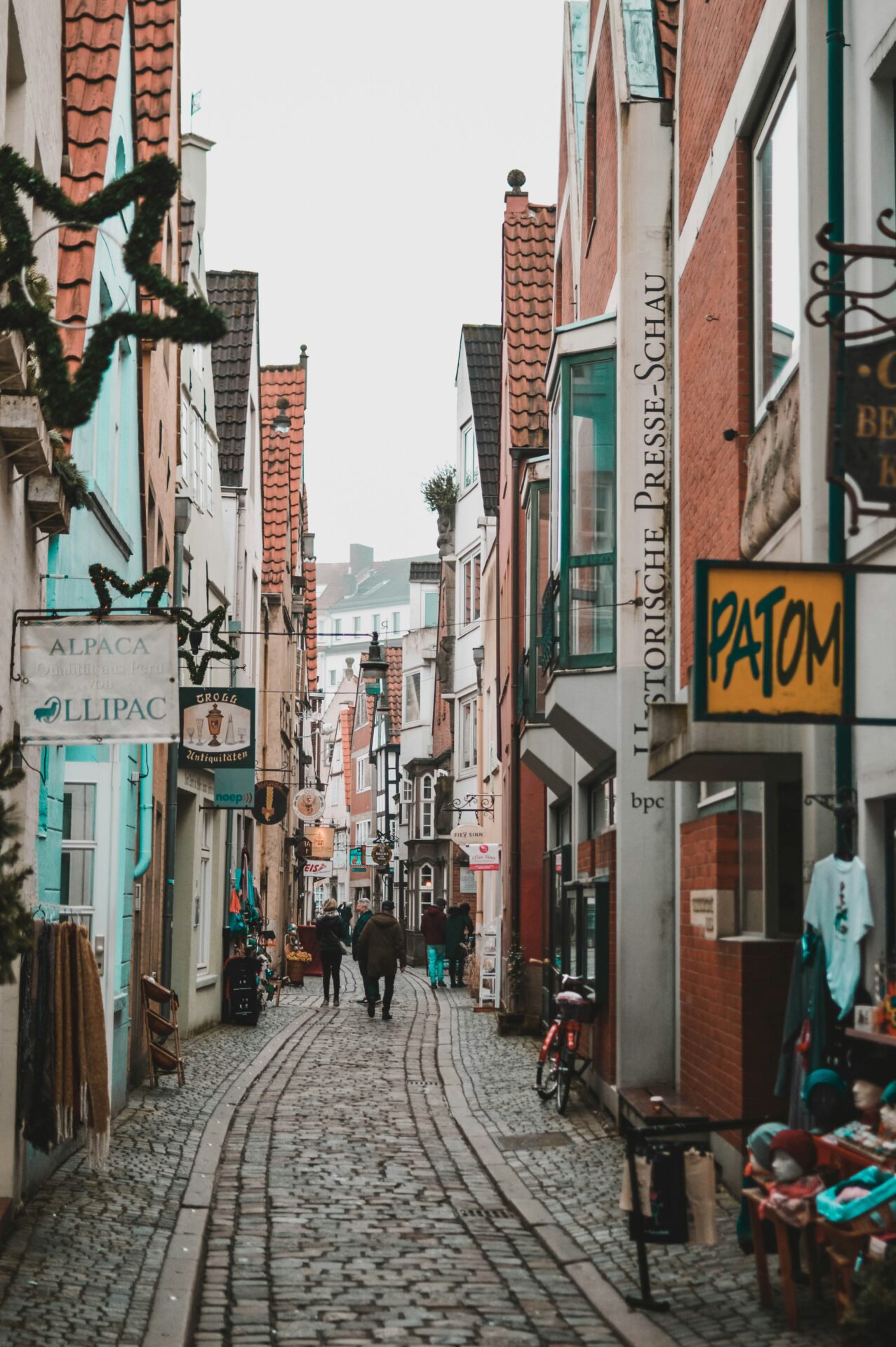
Weser River Life: From Schlachte To Schlachte Embankment
The Weser River runs through the heart of Bremen, offering both scenic views and a taste of local life. My walk along the river connected centuries of history with the city’s present-day charm.
Leisure Along The River Weser
The Weser River draws everyone out—locals and visitors alike. The riverside paths are perfect for jogging, cycling, or just taking a slow stroll, especially along the Schlachte promenade.
In summer, outdoor cafés and beer gardens spill onto the walkways. There’s always something happening.
Popular Activities Along The Weser:
- Walking and running
- Renting bikes
- Boat rides and river cruises
- People-watching from riverside bars
Street musicians often play live music, and families picnic under the shade. The river’s wide stretch gives open views of old ships and modern boats gliding by.
In the evenings, string lights glow above the crowds, and the atmosphere turns relaxed and easygoing.
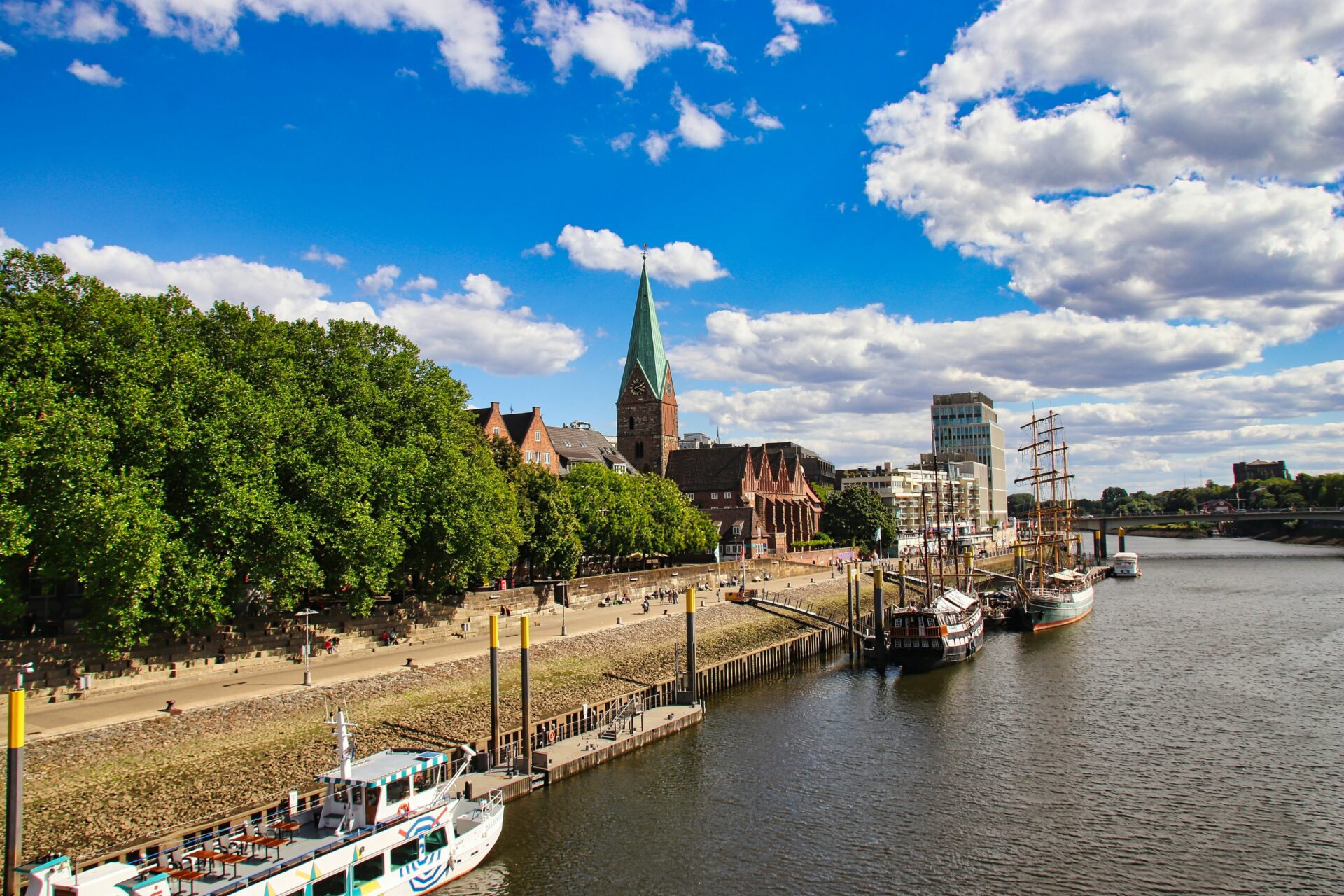
Schlachte Embankment’s Attractions
Schlachte Embankment has changed from an old port into a lively strip full of restaurants and pubs. I love the mix of history and modern nightlife here.
At almost any hour, people gather on outdoor terraces or explore food stalls serving local and international eats.
Schlachte’s highlights include:
- Riverside dining at both casual and upscale spots
- Historic ships moored along the bank—some turned into floating bars or museums
- Open-air concerts and street festivals during the warmer months
Informative plaques along the route tell stories of Bremen’s maritime past. The old warehouse buildings now house modern businesses, showing how Bremen blends tradition with fresh ideas.
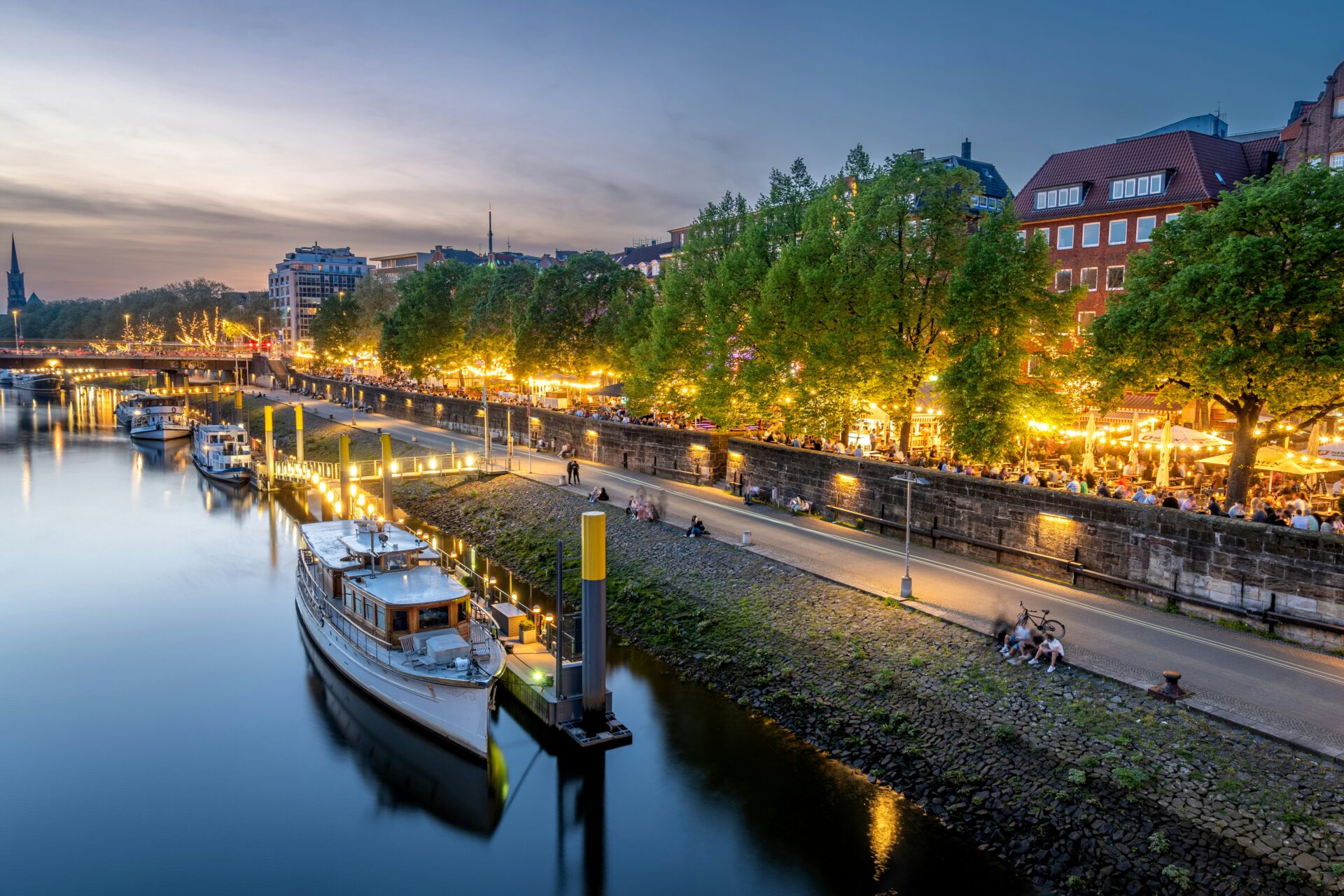
Historic Architecture And Schütting
The riverfront and city center always grab my attention with their striking architectural details. Along Schlachte, you’ll spot buildings that have stood for centuries. Some survived the war, while others were lovingly restored. I get a kick out of finding those old gabled merchant houses and the remnants of customs posts tucked between modern shops.
One landmark I always return to is the Schütting, the old merchants’ guild hall on Market Square. It’s just a short stroll from the embankment. The Renaissance façade stands out—stone carvings, tall windows, and a kind of quiet grandeur.
Schütting at a glance:
| Built | Style | Historic Use |
|---|---|---|
| 1537 | Renaissance | Merchants’ meeting hall |
When I wander from the river toward the city, these historic sights remind me of Bremen’s deep cultural roots. Every building whispers a bit of the city’s story—trade, the river, and how Bremen grew up around them.
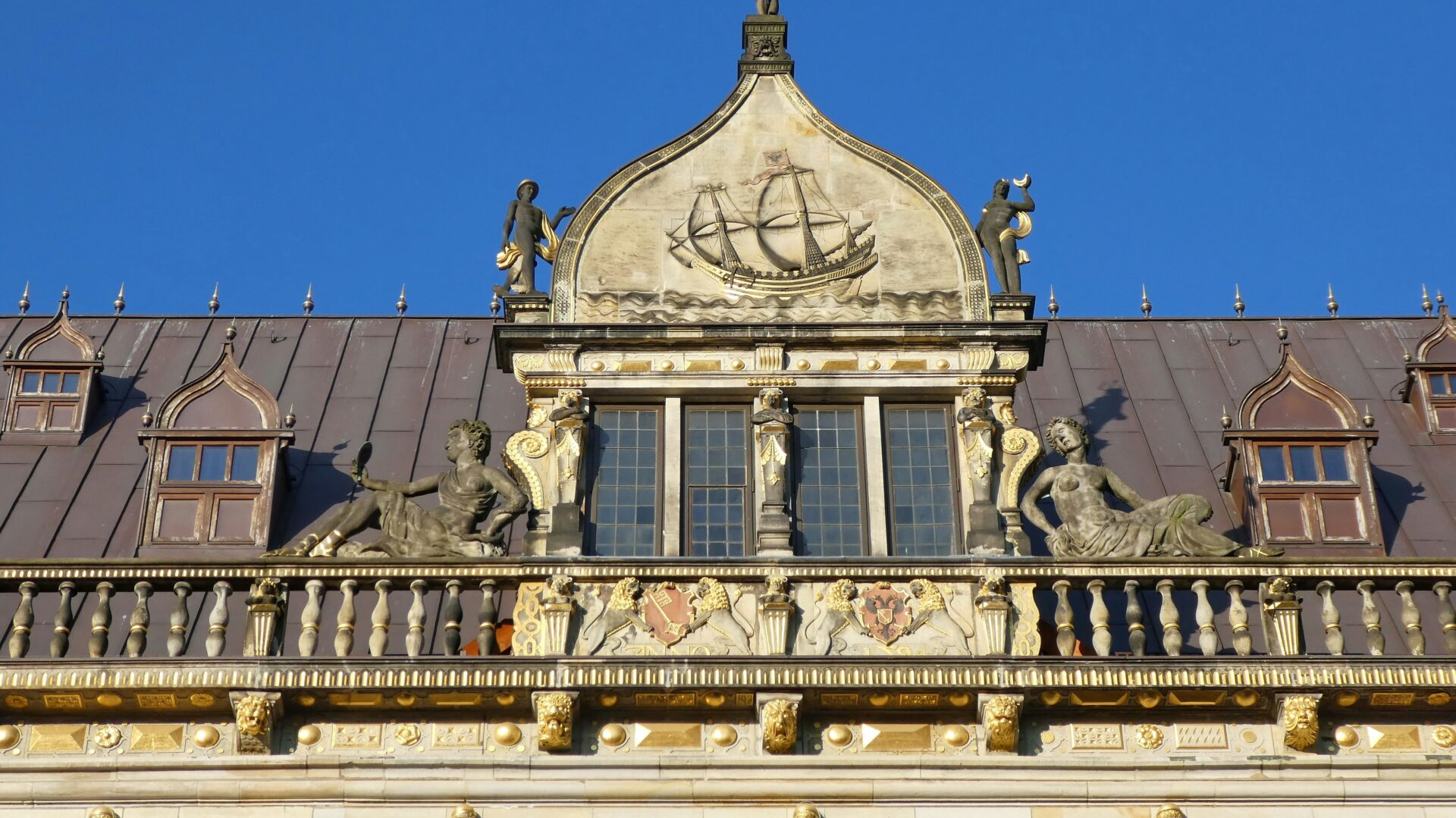
Museums, Art, And Modern Culture
Bremen’s got this cool mix of old-world charm and modern energy. I never felt bored for a second—every corner seems to offer a museum, a quirky sculpture, or an unexpected bit of art.
Kunsthalle Bremen And Bremen Art Gallery
Kunsthalle Bremen is a real gem. It sits near the old town and houses an impressive collection of European art. I wandered through rooms filled with Monet, Van Gogh, Picasso, and German romantics. It’s wild seeing so much history and creativity under one roof.
The modern wing keeps things fresh with new exhibitions. Last time, I stumbled upon vibrant pieces by both local and international contemporary artists. I liked how the architecture pulls together classic and modern—glass walls, bright halls, and old touches everywhere.
You don’t have to be an art expert to enjoy it. Interactive displays made everything feel approachable. I joined a guided tour and learned fun backstories about the paintings. There’s even a cozy café with a view of the city walls—a perfect spot to catch your breath.
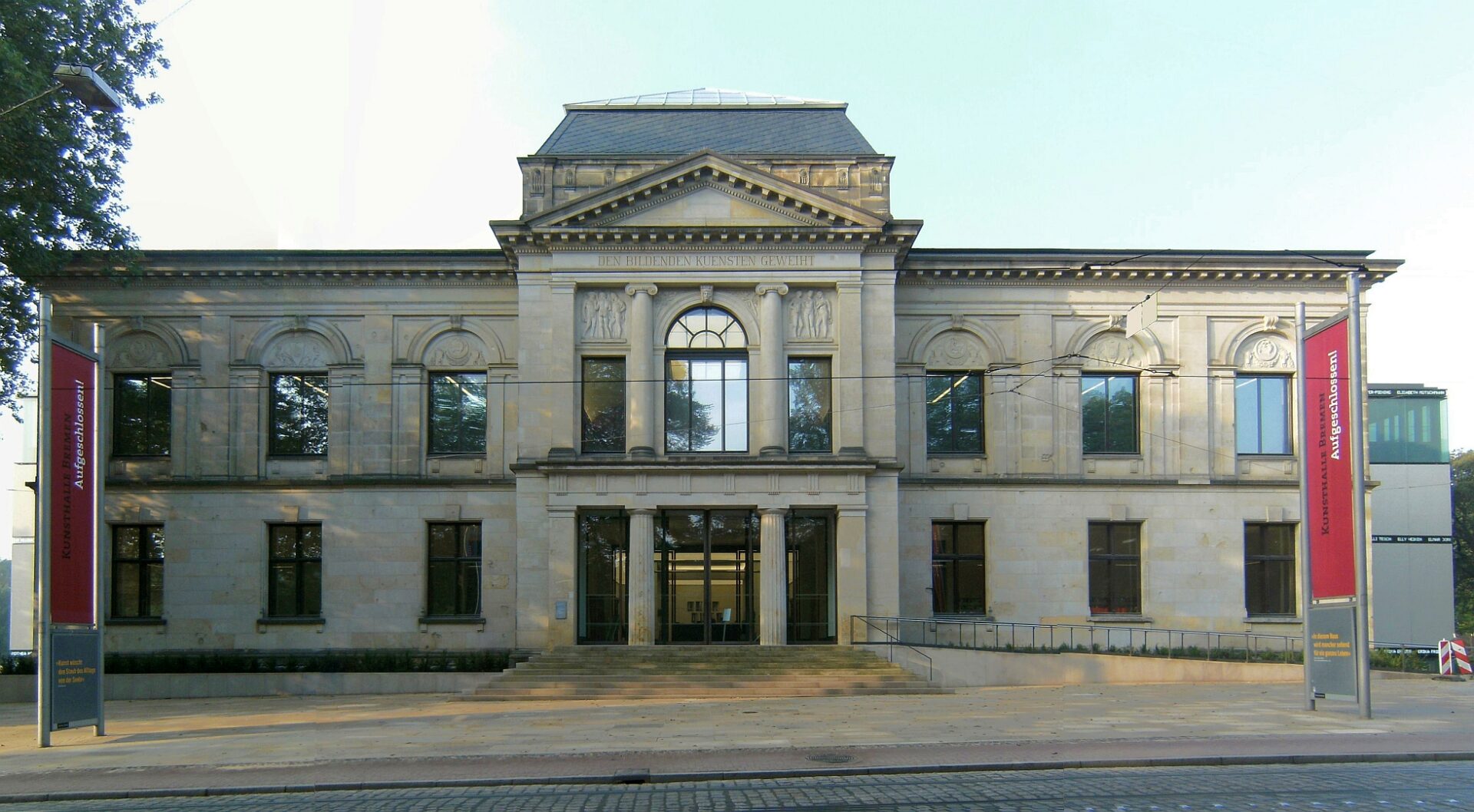
Weserburg Museum Of Modern Art
Weserburg Museum of Modern Art stands out from the crowd. It’s on an island in the Weser River, inside what used to be a coffee factory. The industrial vibe mixes with creative flair, and you can feel it the moment you step inside.
This place doesn’t keep a permanent collection. Instead, they rotate exhibitions that highlight the latest in modern art. I saw everything from bold paintings to video installations and sculptures that really pushed boundaries.
One exhibit compared German artists with those from other countries. It made me rethink what art can be. The open spaces and natural light made wandering the galleries a pleasure.
Some sections invite you to touch, listen, or even contribute your own mark. I picked up a limited-edition print at the museum shop—a nice find for anyone who loves art.
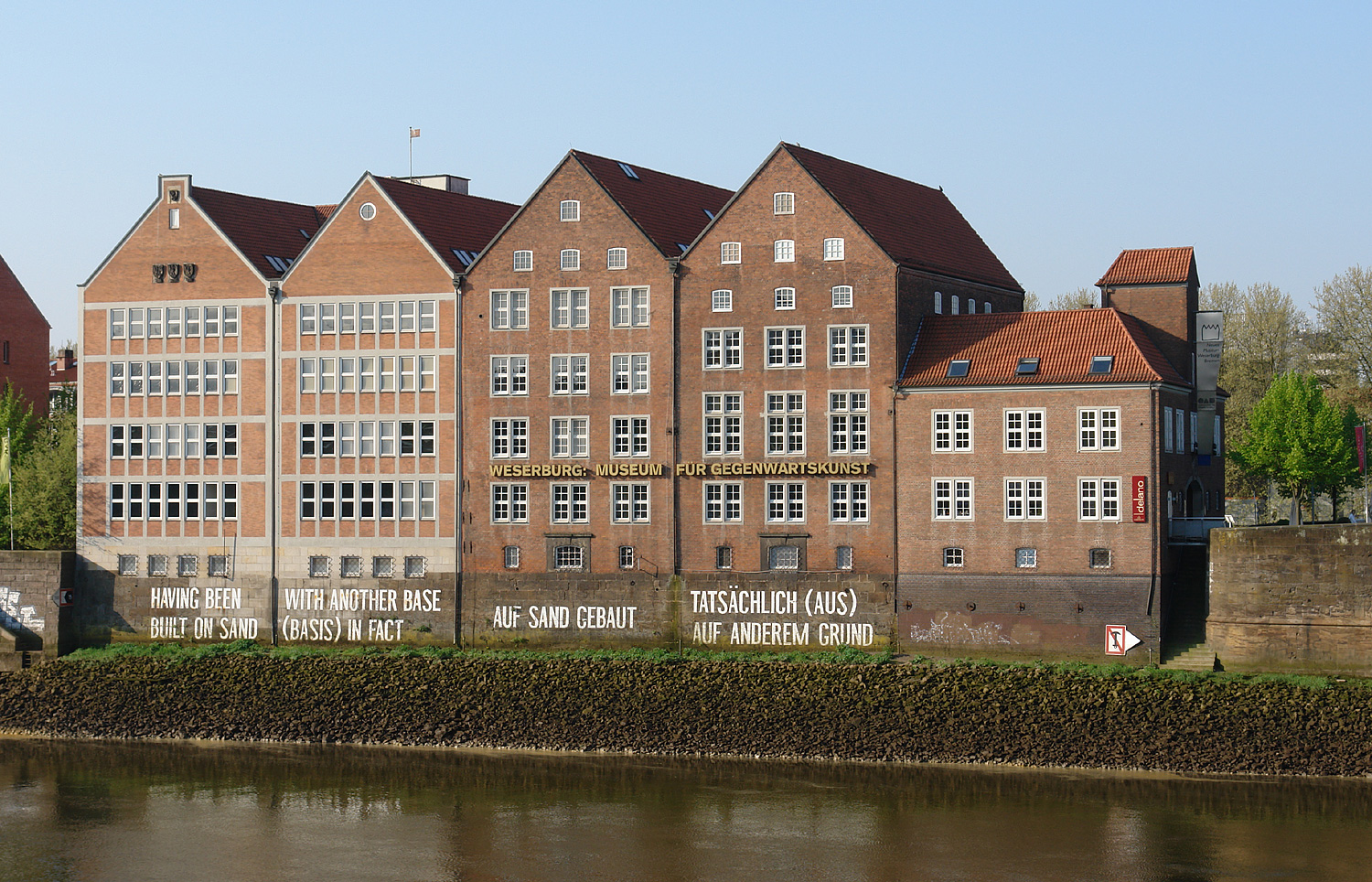
Overseas Museum’s Global Stories
The Overseas Museum (Übersee-Museum) lets you travel the world without leaving Bremen. Exhibits range from natural history to ethnology and global trade. I found rooms filled with artifacts from Africa, Asia, and the Americas, complete with immersive dioramas.
One gallery dives into Bremen’s past as a major port. Old maps, ship models, and rare objects tell the story of explorers and merchants. The timelines and explanations made everything easy to follow.
They don’t shy away from modern issues either. Topics like climate change and migration come alive through videos and hands-on experiments. Even the most complex subjects feel understandable.
Families seemed to love it here. The kids’ area buzzed with puzzles and interactive games, keeping little ones entertained for ages.
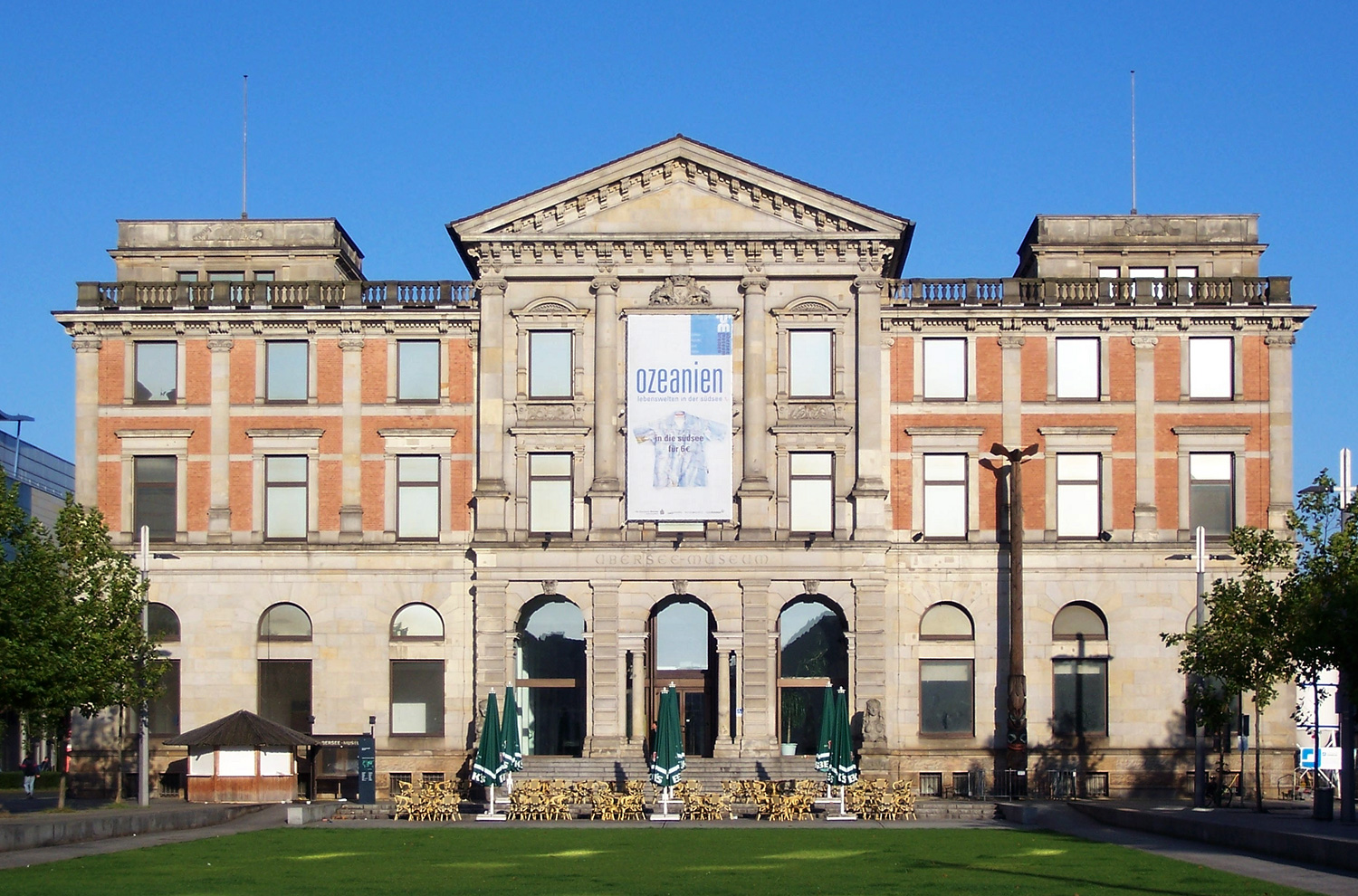
Public Artworks By Gerhard Marcks
Bremen’s streets and squares are dotted with art by Gerhard Marcks, a sculptor who left his mark on the city. He’s most famous for the “Town Musicians of Bremen” statue. I always spot crowds around his bronze sculpture outside the Town Hall—everyone wants that lucky photo.
You’ll find more of Marcks’s work across Bremen. His sculptures have simple lines and bold shapes, and somehow they never feel dated. Many pieces connect to local stories and legends, which makes the city’s history feel more alive.
I noticed people—locals and tourists alike—rubbing the donkey’s hooves on the Town Musicians statue for good luck. City guides explained that Marcks wanted his art out in the open, for everyone to enjoy and touch.
It’s almost like every walk in Bremen turns into a mini art tour. These public artworks give the city real character and a sense of surprise.
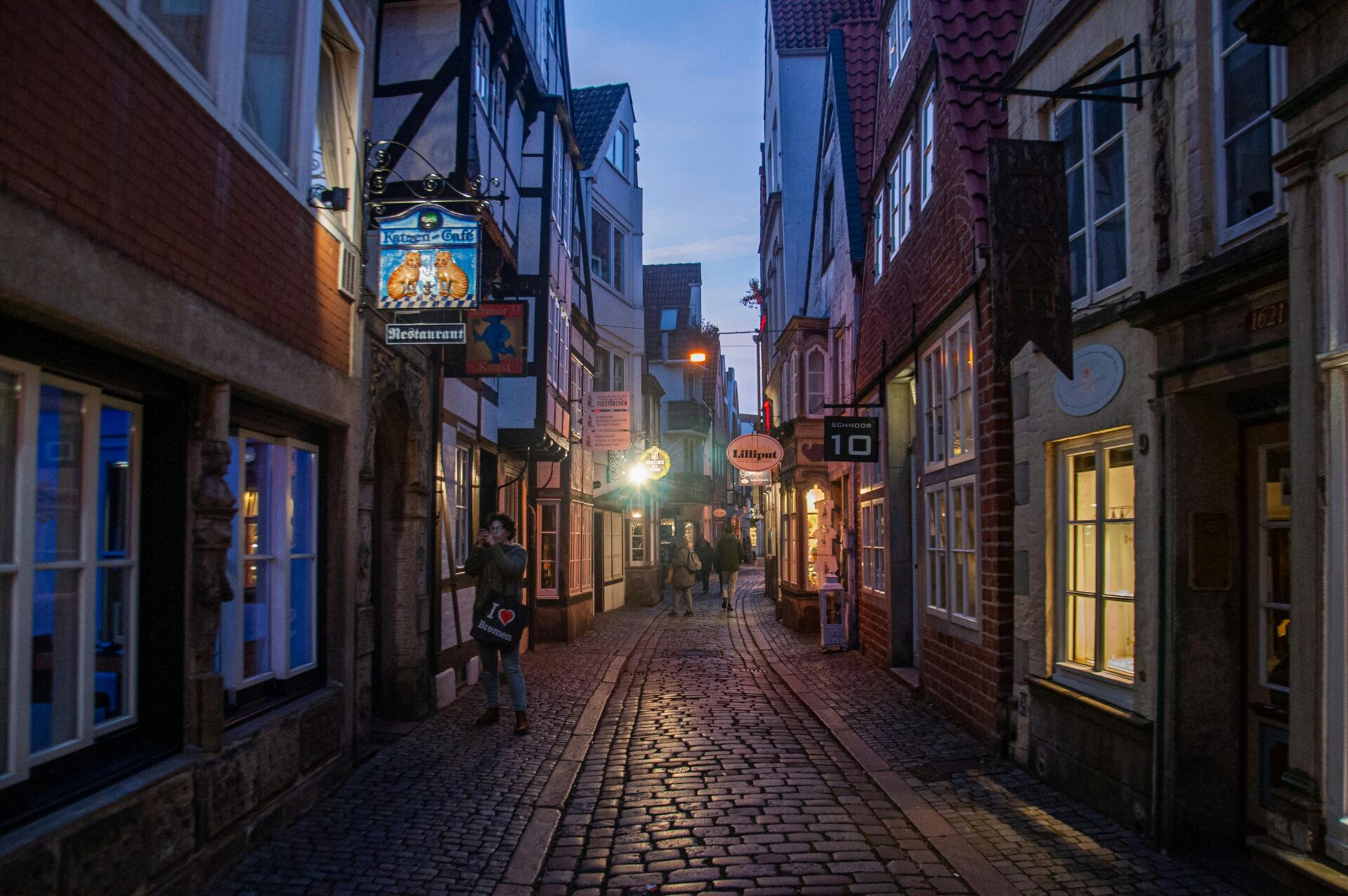
Exploring Bremen And Beyond: Practical Information And Road Trips
Bremen blends medieval charm with the buzz of a modern city. I found fairytale experiences, delicious food, and easy day trips to nearby towns.
St. Peter’s Cathedral And Historic Landmarks
St. Peter’s Cathedral anchors Bremen’s historic center. Its towers and stonework tell stories that stretch back centuries. When I stepped inside, stained glass and quiet chapels brought a sense of peace and age.
Right nearby, Bremen Town Hall stands as a UNESCO World Heritage site. The mix of gothic and renaissance architecture is truly something. I lingered by the Roland Statue outside—a northern German symbol of freedom.
Wandering the Schnoor Quarter, I found narrow lanes lined with timber houses and quirky shops. It felt like walking into a Brothers Grimm tale. Later, I unwound in the city’s Bürgerpark, a big green space with shady trails and still ponds.
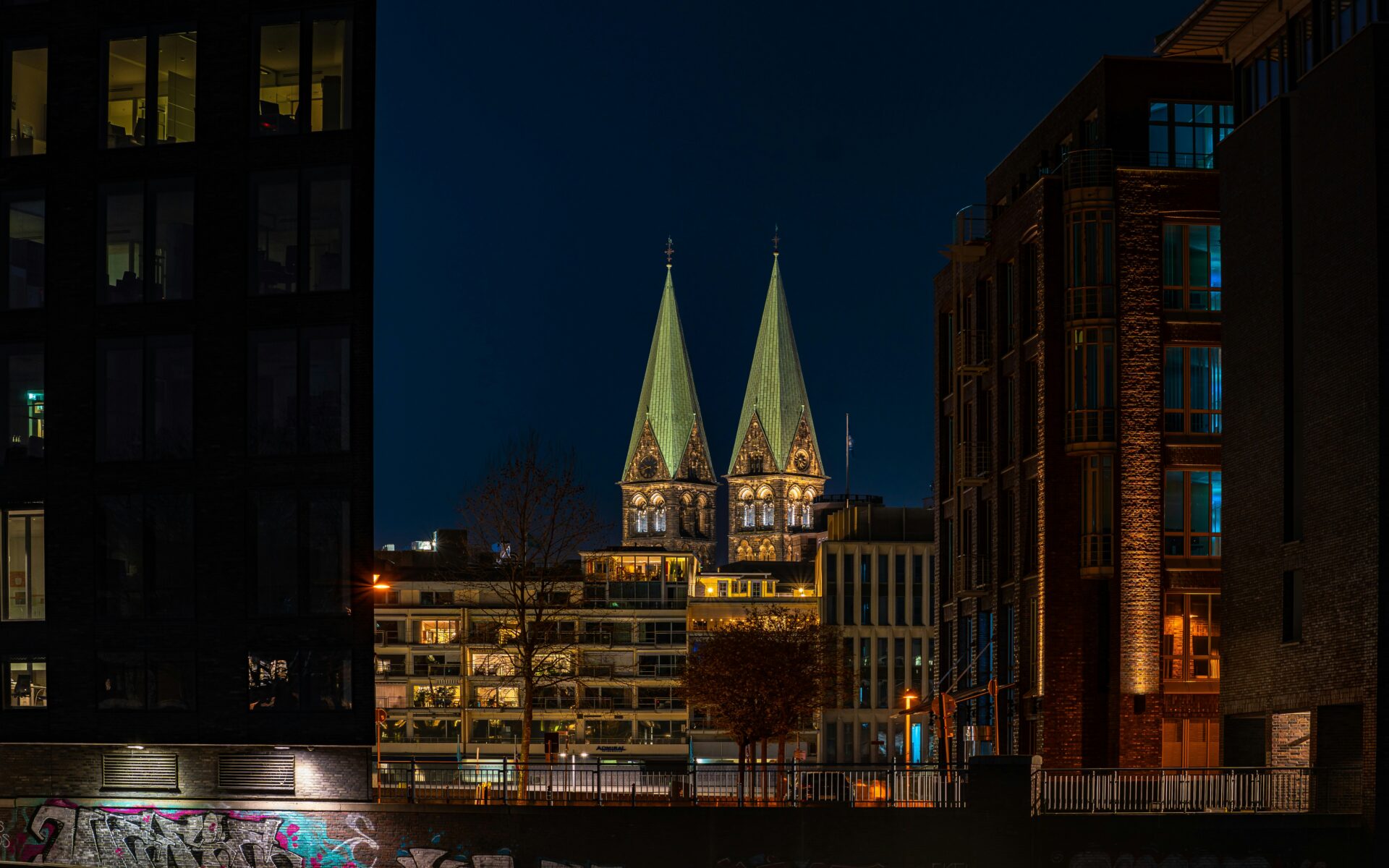
Local Flavors: From Knipp To Schlachte
Bremen’s food scene caught me off guard in the best way. I tried Knipp, a hearty sausage dish served with fresh bread and sharp pickles. Along the Schlachte, riverfront restaurants served up classic seafood—smoked eel and North Sea herring are local favorites.
Coffee houses here take their roast seriously. Bremen’s “coffee city” nickname is well-earned. On market days, Domshof square fills with vendors offering fresh pastries, cheeses, and produce. Tasting these treats gave me a feel for everyday life.
For lunch, I’d suggest Labskaus or a North German fish sandwich. Many places change up their menus with the seasons, especially during festivals. I always found the atmosphere laid-back and welcoming.
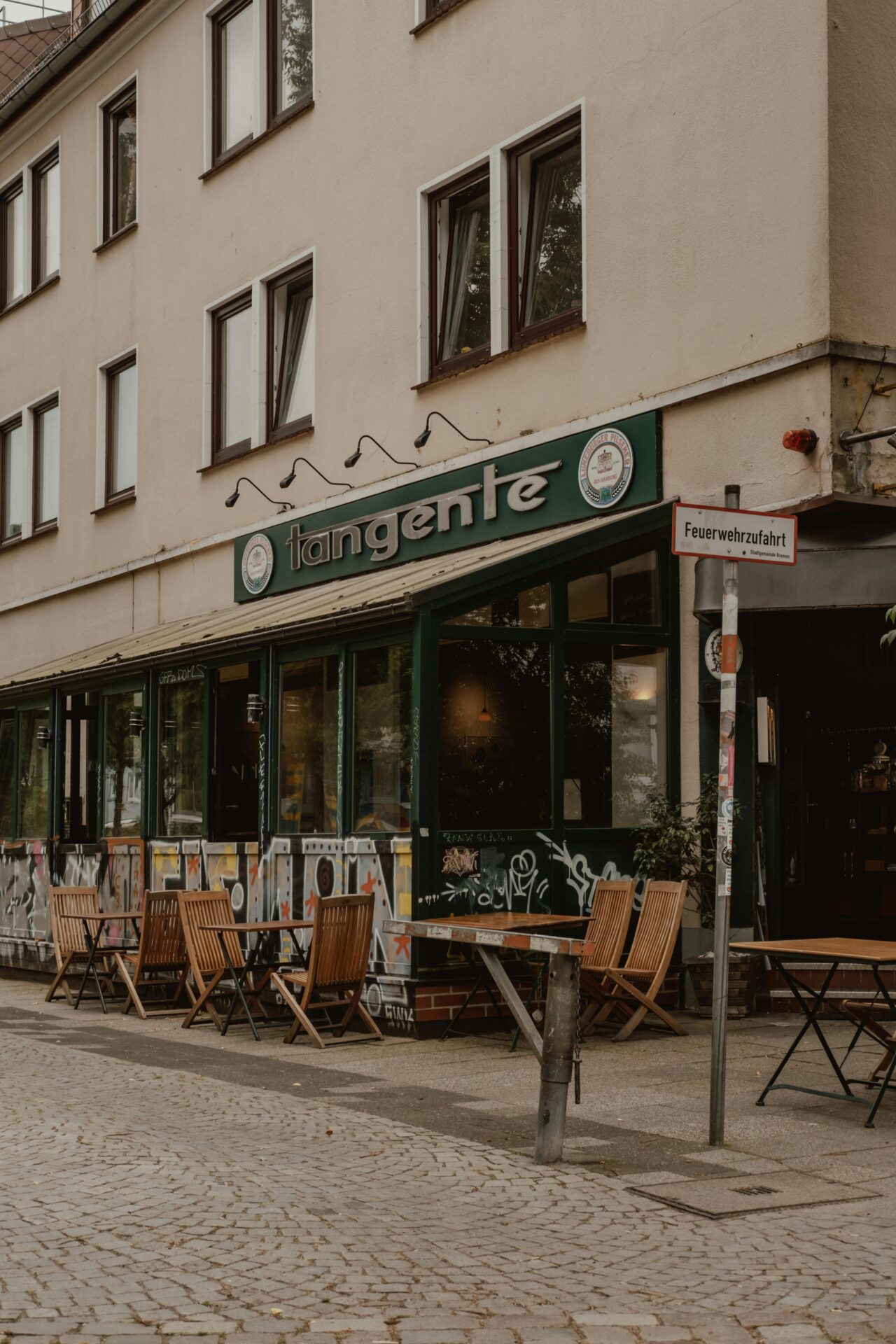
Day Trips Through Northern Germany’s Fairytale Towns
Bremen makes a great base for exploring northern Germany’s fairytale towns. I mapped out my own road trip to places straight from the Brothers Grimm stories. In Bremerhaven, I dove into maritime history and watched the busy harbor.
Heading south, Marburg charmed me with its hilly old town and Rapunzel connections. Hamelin brings the Pied Piper legend to life with statues and street art. A short drive took me to Hanau and Steinau, both important in the Grimm brothers’ lives.
Out in the countryside, Kassel drew me in with Wilhelmshöhe Castle and parks that feel straight out of a storybook. Castles like Trendelburg (Rapunzel’s Tower) and Sababurg (Sleeping Beauty’s Castle) dot the landscape. If you’re into fairytales, Alsfeld’s half-timbered houses and nearby villages are a real treat.
| Destination | Main Attraction | Fairytale Link |
|---|---|---|
| Marburg | Old Town, Castle | Rapunzel |
| Hamelin | Pied Piper Houses | Pied Piper |
| Trendelburg | Castle | Rapunzel’s Tower |
| Sababurg | Sleeping Beauty’s Castle | Sleeping Beauty |
| Alsfeld | Market Square | Fairy Tales Museum |
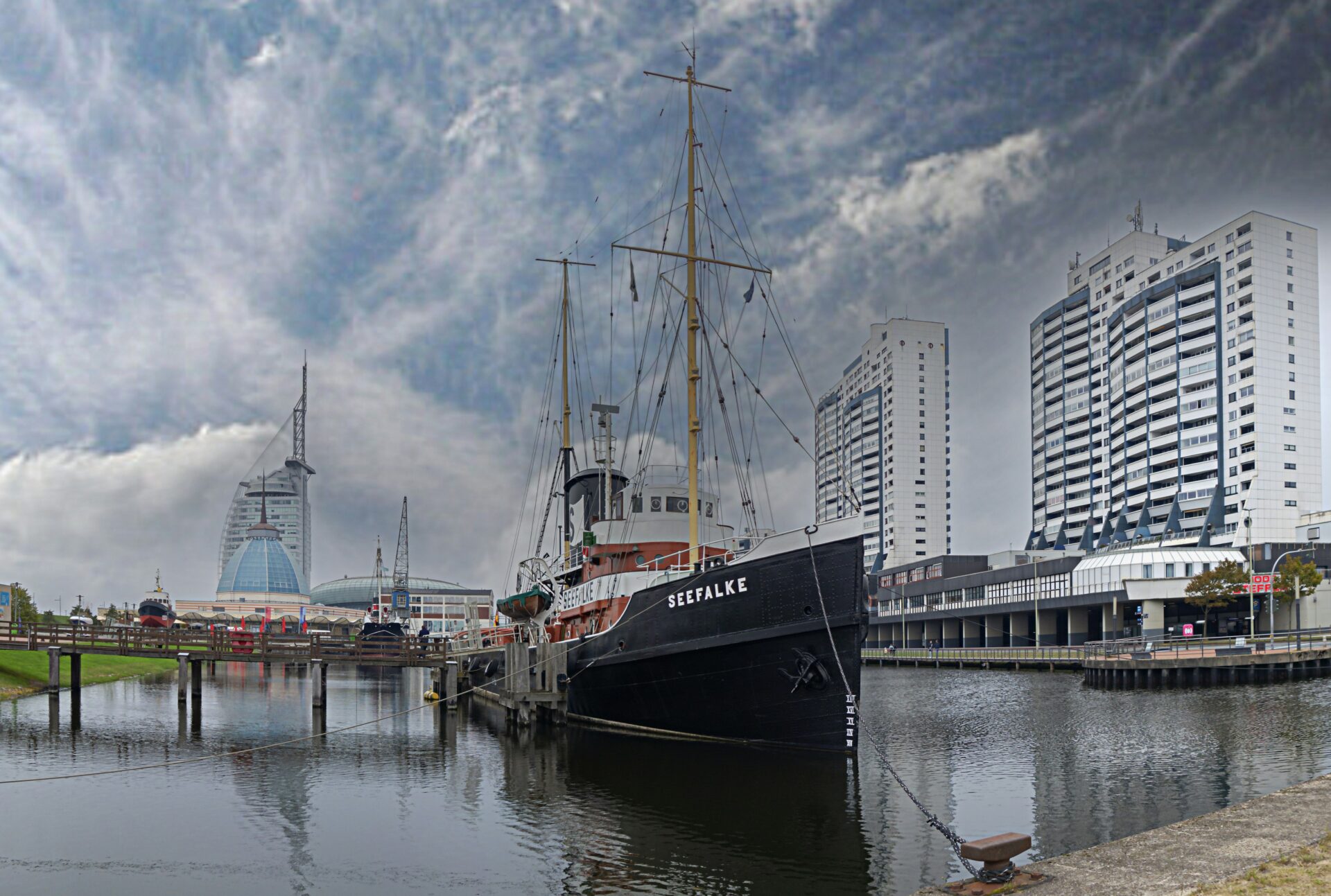
Guided Tours And Tourist Information
Guided tours really open up Bremen and its surroundings. I hopped onto a city walking tour that started right at the main Tourist Information Center by the town hall.
The guide chatted with us in clear, friendly English, tossing in stories about both Bremen’s medieval roots and its modern quirks. I loved how the details felt fresh, not just memorized facts.
If you’re into themes, Bremen’s got you covered. I noticed tours following the Grimm Brothers’ tales, and a few river cruises drifting by. Day trips to Bremerhaven or even deeper into Hessian fairytale country seemed to leave pretty often—sometimes by bus, sometimes by train.
Most of those tours bundled in tickets, a guide, and then gave us some time to wander on our own. That mix worked well for me.
I picked up a handful of leaflets from the tourist information desks, and they came in a bunch of languages. For a more DIY approach, I downloaded a city map and tried out a couple of digital apps.
Those tools helped me figure out which castles, parks, and old neighborhoods I wanted to see, both in Bremen itself and out in the countryside. Honestly, having those resources made the whole trip smoother and way more fun.

